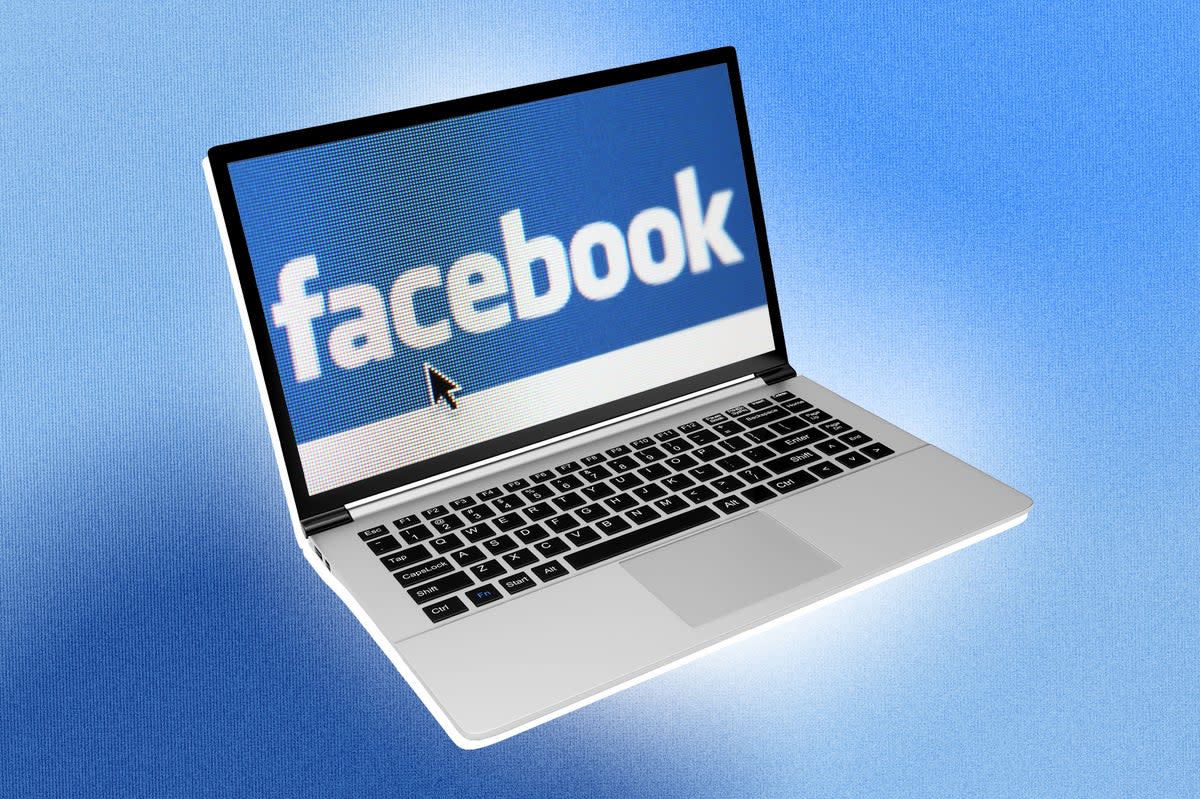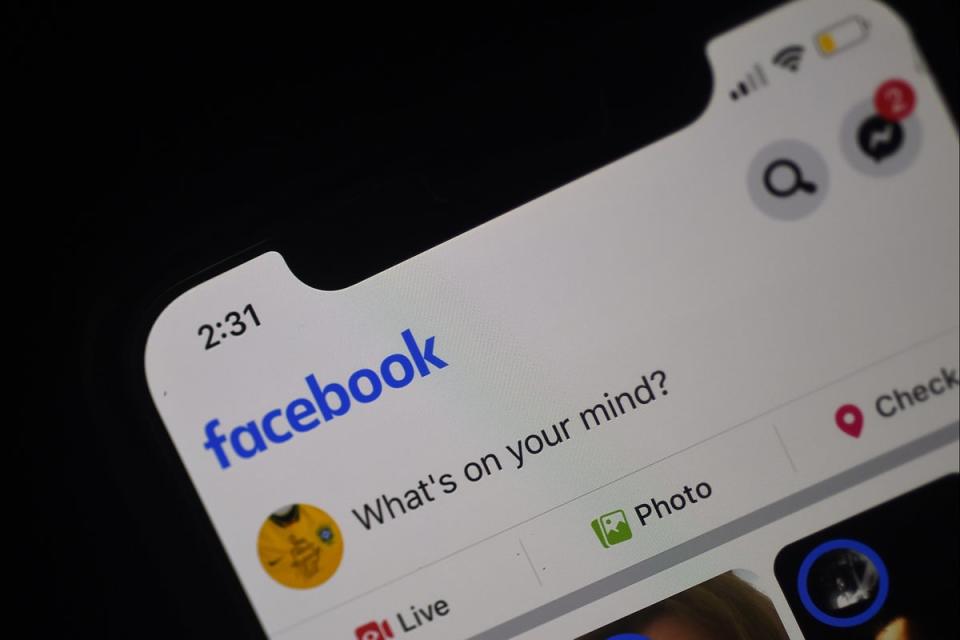Song lyrics, political statements and feeling ‘sooo fed up’: how the Facebook status evolved over two decades

- Oops!Something went wrong.Please try again later.
The year is 2007. Unless someone rudely unplugs the modem to make a phone call, the promise of an evening on the internet unfolds before me. Time to log into Facebook and share a life update with several hundred “friends”. How best to sum up my current state of mind? Here goes: “Katie Rosseinsky is addicted to chocolate digestives.”
This post is just one of many banalities from my teenage archive of Facebook statuses. “Katie Rosseinsky is alright,” I reassure my online network in a particularly evocative post. “Katie Rosseinsky is sound,” I declare boldly in another. On one October evening, I’m so excited about going to see Alex Turner’s non-Arctic Monkeys side project The Last Shadow Puppets in concert that I mark the occasion with four separate statuses (they accrue three likes, one from my mum). But it’s not all good times. I also tell my public when I’m “so fed up”, “having a moan!” and even “hating William Gladstone!!!!!” (Victorian prime minister and main character of my History AS-level syllabus).
Looking back, what’s striking is how straightforward and unvarnished these posts seem: they really are just the mundane outpourings of a teenage girl who wasn’t particularly bothered about seeming cool (but definitely needed a bit of sympathy about her history homework). This month marks 20 years since Mark Zuckerberg launched Facebook (or “TheFacebook”, as it was then known) as a way for Ivy League students to connect digitally. Over those two decades, the Facebook status has evolved from a humble, often practical update to a place for over-sharing, humble-bragging, and dubious political statements. At the same time, the way we present ourselves on the internet has changed dramatically.
In Facebook’s early days, the concept of posting in real time about what you were doing and how you were feeling was pretty novel (although many of us had gotten some practice in beforehand by adorning our MSN Messenger statuses with pointed song lyrics). MySpace, the once-beloved social platform rendered obsolete by Facebook’s arrival, had allowed its users to share “bulletins” with their friends, but these tended to be longer, more rambling posts (and were used mainly to fill out weird surveys and personality quizzes). Plus, they’d disappear into the digital ether after a few days, and no one actually seemed to read them – probably because they were fully occupied with reshuffling their Top Eight friends list more frequently and brutally than a Tory cabinet.
So, for many of us, Facebook marked our first foray into narrating our lives online, to a closed ecosystem of friends, acquaintances and random hangers-on. “It was all very innocent, without any social shaming if [friends] didn’t respond or if no one liked your photo,” says Dr Gillian Brooks, a senior lecturer in strategic marketing at King’s Business School who has studied social media. “Everyone was so green [because] no one had seen anything like it before.” Initially, the status format forced you to write about yourself in the third person; you couldn’t get rid of the verb “is” after your name, so getting your feelings across often required some grammatical manoeuvring (note: “Katie Rosseinsky is hating William Gladstone!!!!!”).
The platform’s great innovation was the introduction of the news feed in 2006, which collated users’ status updates and lined them up in one long, algorithmically driven list. It’s hard to believe now, but at the time, this new measure proved so controversial with users that Facebook reportedly hired security guards to stand outside its office, in case a ruckus kicked off. People claimed to hate the way it revealed their every like, comment and “poke” (remember those?) – but the feed actually made users spend more time on Facebook than they had before. It also gave us a first taste of just how addictive social media’s infinite scroll could be, as we trawled our feed for fresh snippets from other people’s lives, “in the hopes of getting some fleeting sensation – some momentary rush of recognition, flattery, or rage”, as the writer Jia Tolentino put it in her essay The I in Internet.
What were we scrolling through, apart from albums filled with 140 blurry photos from every single mediocre night out? As we got used to sharing our thoughts in statuses – and imagining their effect on our digital audience – we all seemed to fall into similar cliches. There was the vague, passive-aggressive message (surely the close ancestor of the subtweet) where we hinted that we’d been somehow wronged – “can’t believe how SOME PEOPLE think they can treat me!” – in order to elicit a flurry of “U OK hun???” comments (the object of your ire would remain elusive). There was the fridge magnet-worthy philosophy: one friend recently dug up an old post in which she mused that “every song ends… but is that any reason not to enjoy the music?” (we looked it up, and apparently it came from One Tree Hill). And there were the cringe-inducing song lyrics, designed to telegraph our unique taste: of all the embarrassing rubbish I posted online in my teens, the status that simply reads “Can’t stand me now”, in a deeply uncreative tribute to The Libertines, makes me roll my eyes the most.
From status to statement – that’s the cultural shift
David Edmundson-Bird, Manchester Metropolitan University
Over time, the little status text box expanded; we were freed from the constraints of the “is” format and could add photos and even video too. The expanded character count (bumped up to a massive 5,000 in 2011, which now seems positively stingy compared to today’s character limit of 63,206) encouraged us to overshare: who hasn’t ended up sucked into a rambling, drama-laden mini-memoir shared by someone you met in freshers’ week and never saw again? At this point, the Facebook status became less about “what you were doing at that moment and moved much more to [making] a statement”, argues David Edmundson-Bird, principal lecturer in digital marketing at Manchester Metropolitan University. “From status to statement – that’s the cultural shift.” Instead of simply telling everyone, say, that you were excited for your holiday or bored at work, we started pontificating about our worldviews.
By the mid-2010s, Facebook started to feel a bit, well, naff. It was no longer the preserve of millennials sharing in-jokes and silly photos; instead, it had been invaded by the parents of said millennials, posting missing dog alerts from the other side of the world and “Keep Calm and Carry On” memes. Everyone was marking themselves safe from disasters that occurred hundreds of miles away, or smugly informing their network that they’d voted. At the same time, rival platforms like Twitter and Instagram were on the rise, eating into our screen time and dominating the cultural conversation. The former encouraged brief, pithy statements that sometimes lacked nuance; the latter made us share a highlights reel of glossy, edited images as we tried to keep up with a proliferation of newly minted “influencers”.

And is it any wonder we fell out of love with the Facebook status, as we slowly realised that everything we posted, clicked on and shared was being logged, then used to feed the site’s mysterious algorithm, and deliver us creepily targeted adverts? “It’s become a psychographic engine,” says Edmundson-Bird. “It’s been collecting data for a long time. The advertising machine was built around this ability to try and understand people’s qualities based on things that they said, behaviours that they exhibited on the platform. The way people have posted on there has been to the benefit of Facebook, [shaping] how it might then decide what to put in front of you in terms of advertising content.” Even back when I was posting about chocolate digestives, Facebook was probably taking notes about my sugar consumption. “If you’re not paying anything for a product, you are the product,” Dr Brookes adds. “And that’s fundamentally what we have with Facebook. [We thought,] ‘How kind of a company to give us access to this free platform for us to connect with each other.’ But that only lasted maybe five to seven years before people realised, ‘wait a minute, we’re what’s being sold on Facebook to advertisers’.”
These days, whenever I (rarely) open Facebook, it’s a barrage of “suggested posts” from groups I’ve never heard of, interspersed with a few smug updates, ticking off various life milestones: there are women brandishing engagement rings and couples standing by front doors holding keys. But, 20 years on, Facebook is “not dying by any stretch of the imagination”, Edmundson-Bird says. It’s still the largest app in the world, with more than 3 billion daily users. I wonder how many of them are posting regular statuses, though; I certainly can’t remember the last time I shared one. In fact, the only Facebook feature I use is the “memories” function – where my embarrassing, endearing teenage posts are still preserved in digital amber.

